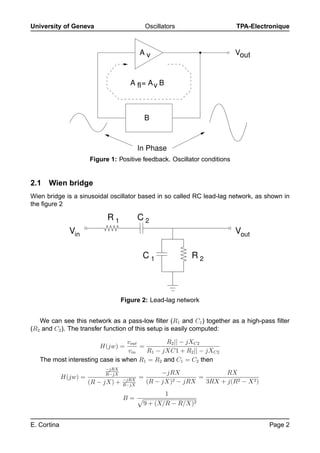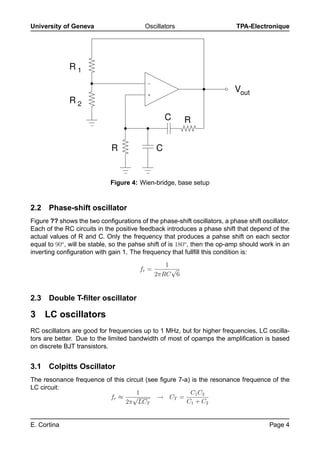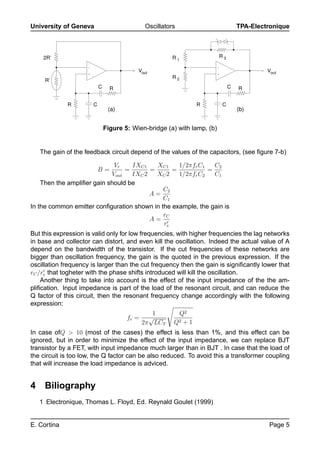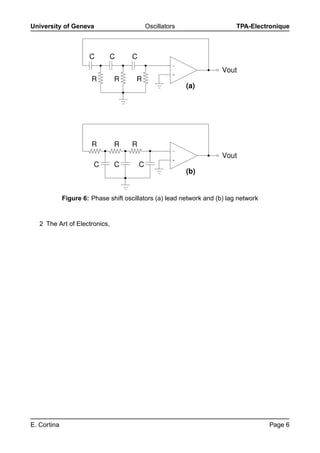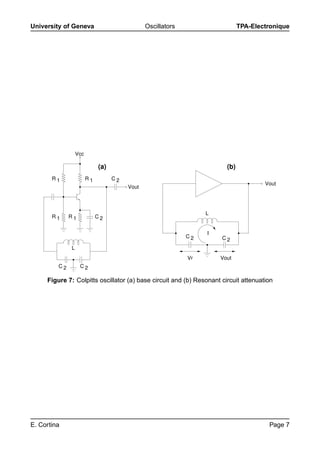This document discusses different types of oscillators, including RC oscillators and LC oscillators. RC oscillators are useful for frequencies up to 1 MHz and include Wien bridge, phase-shift, and double T-filter oscillators. LC oscillators are better for higher frequencies above 1 MHz due to limitations of opamps. Specific oscillator circuits are described, including the Wien bridge configuration and conditions for oscillation. The Colpitts oscillator uses transistors for amplification at higher frequencies.

